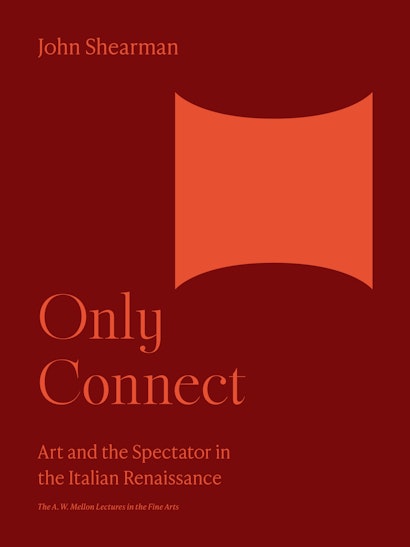Only Connect constructs a history of Renaissance paintings and sculptures that are by design completed outside themselves by the spectator, that draw the spectator into their narrative plot or aesthetic functioning, and that reposition the spectator imaginatively or in time and space. John Shearman’s concern is mostly with anterior relationships with the viewer—that is, relationships conceived and constructed as part of a work’s design, making, and positioning. He proposes unconventional ways in which works of art may be distinguished from one another, and in which spectators may be distinguished as well, and enlarges the accepted field of artistic invention. Only Connect challenges us to recognize the presuppositions of Renaissance artists about their viewers, shining a light on the process of discovery by some of the most inventive and intellectual artists of the period.
Awards and Recognition
- Winner of the Charles Rufus Morey Award, College Art Association
- One of Choice's Outstanding Academic Titles for 1993
John Shearman (1931–2003) was the Charles Adams University Professor Emeritus at Harvard University and the author of many books, including Raphael in Early Modern Sources, 1483–1602; The Early Italian Pictures in the Collection of Her Majesty the Queen; and Mannerism.
"In guiding our concentrated attention to the action that unfolds in [a group of paintings by Raphael, Michelangelo, Pontormo, and others that represent the Entombment], the author has taught us to make the relevant connections and thus to see these deeply moving works with fresh eyes."—E. H. Gombrich, New York Review of Books
"Shearman's six lectures contribute significantly to current debates about the interpretation of images, particularly in relation to their reception by the spectators."—Martin Kemp, Times Literary Supplement
"As the author of a brilliant work on Mannerism, in which literature and music were employed to explain characteristic forms, Shearman is eminently qualified for his task. [He] weaves a brilliant account of poetry and painting immortalising the sitter."—Bruce Boucher, The Times
"[Shearman's] argument that the observer, in the artist's mind, was as carefully placed, posed and arranged as the content of the work is sustained by considerable intelligence and scholarship."—Robin Blake, Independent on Sunday
